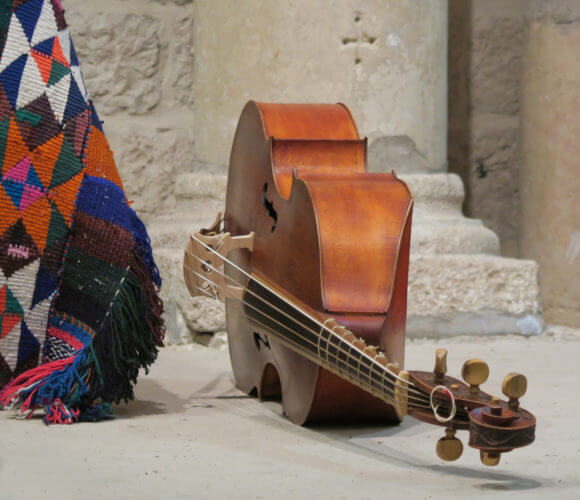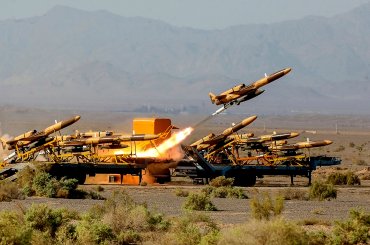In January the Palestine Philharmonie, a major Palestinian musical initiative, presented concerts in Jerusalem and Bethlehem, as well as a full day of diverse cultural activities.

Efforts to reclaim Palestine’s cultural identity and cultural life from the paralysis of displacement, subjugation, and occupation have been under way for years, with myriad local initiatives and the establishment of two major music conservatories: the Edward Said National Conservatory of Music (ESNCM), and Al-Kamandjati. Post-conservatory life, however, has remained Palestine’s weak link for musicians. Professional opportunities are limited, stifling community involvement and the larger tradition of concert-going—and resulting in a talent-drain of Palestine’s musicians who must look elsewhere for a professional life in music.

Remedying this missing link in the cycle of Palestinian musical life is, in essence, the goal of the Philharmonie.
As described by its proponents, the project
aims to create a cultural entity, such as a “City of Music”, that will offer a variety of intercultural music-related activities and events, not least by establishing Palestine’s first permanent professional orchestra. The entity and its orchestra are to be based at the Convention Palace – Bethlehem. The Palestine Philharmonie sets itself within a grid of Palestinian artistic institutions and offers them a space for creative production. It provides access to music and culture to all audiences. With a body of professional musicians at its core, and by hosting artists of great renown, it radiates music and art to the whole country and beyond.

Bethlehem’s Convention Palace, situated next to historic Solomon’s Pools, will be the home of this “City of Culture and Civilization”. The Palace is a modern complex that includes various meeting halls, an exhibition gallery, a museum, gardens, a theatre, and a concert hall seating 1600 (including 400 in the balcony). Having performed there in both full symphonic orchestras and small chamber ensembles, and having listened to both from the audience, I am impressed by the hall’s excellent acoustics, as well as its design, which provides good stage visibility for the full audience. The Palace’s architects sought to integrate the historic and archaeological nature of its surroundings into the hugely functional complex, a complex that is similar in function—though certainly not aesthetics—to London’s Barbican Centre. The complex incorporates eighty-four spaces for galleries, artist studios, and shops between the main building and Solomon’s Pools, all set amidst a series of alleys and staircases inspired by the old city of Jerusalem.
Renowned violinist Amandine Beyer was the focus of January’s Philharmonie music-making, along with her husband, viola da gambist Baldo Barciela. Although Ms. Beyer’s interests are wide and extend fully to the modern era and living composers, she and her husband are specialists in Baroque performance practice. She is the director of Gli Incogniti, and her critically acclaimed extensive discography includes a superb recording of the unaccompanied sonatas and partitas of Bach—a ‘holy grail’ among violinists—that was awarded Editor’s choice de Gramophone last year.
The focus of her week in Palestine was four concerti by the Italian violinist and composer Arcangelo Corelli (1653–1713). These consist of two solo violins, plus an ensemble of violins, violas, cellos, viola da gamba, theorbo, guitar, qanoun, spinet, and harpsichord. If Corelli was at best only distantly familiar with the oud, qanoun, and buzuq, the instruments nonetheless proved to be quite at home in Baroque Italy.

Each concerto featured Ms. Beyer on one of the solo parts, and a young Palestinian violinist on the other: Lourdina Baboun, Lamar Elias, Mahmoud Karzon, and Gandhi Saad. Jude Amous, Suhail Canaan, and Tibah Saad played solo cello.
Gandhi and Tibah Saad are the youngest of four siblings who played as a string quartet when they all lived in their native Galilee; the next-oldest, violinist Mostafa, soloed with violinist Nigel Kennedy on the stage of London’s Royal Albert Hall in 2013, and is now pursuing his studies in Russia. The oldest, violist Omar, spent time in Israeli prisons for refusing to serve in the IDF, and now studies in Italy. (The Saads are Druse.)

Amandine Beyer exemplifies the rare musician whose musicological expertise of the period, technical mastery of the instrument, and integrity of artistry combine to breathe fresh life into even the most unassuming phrases. For most musicians, these experiences are all too rare. I think back decades, studying the Ravel Quartet with Felix Galimir, who had worked on it with Ravel himself; or years earlier, studying with Galimir the d minor Brahms sonata and the sonata of César Franck, whose traditions he closely inherited. Even earlier, as a teenager, it was being coached on Beethoven quartets with three members of the Budapest Quartet. It is not melodramatic to say that such experiences quite literally become part of who you are.

And so was the week with Amandine Beyer. I have never been closely involved with period performance, despite having friends in the field, and aside from Ms. Beyer, only five of our string players are period performers by profession: violinists Camille Aubret and Matthieu Camilleri, violist Mathilde Vittu, viola da gambist Baldo Barciela, and cellist Juliette Vittu. We ‘modern’ players kept our wound strings rather than the plain gut of Corelli’s time, using our own instruments with their slightly longer necks, more substantial bass bars, chin rests, and other modifications that evolved over the intervening three centuries. These were reasonable compromises; what was important was that everyone used Baroque bows, which are shorter and lighter than modern bows, with a camber that arches nearly, or literally, convex rather than concave.

Ms. Beyer’s demonstrations of the articulation and bow technique of early eighteenth century Italy were clear and erudite. Such informed artistry, rather than embalming the music in some arcane system of retrospectively enforced ‘rules’, instead liberates the music from the intervening centuries’ cobwebs.
Our first concert was in Jerusalem. We did not know until the event itself whether all the Palestinian musicians would be able to circumvent Israel’s self-proclaimed “annexation” of East Jerusalem and reach the concert. Unlike past performances I have played in Jerusalem, this time, with diplomatic assistance, all got through. The performance took place at the École biblique et archéologique française de Jérusalem, not far from the Damascus Gate and near enough to St. George’s Cathedral that Mordechai Vanunu, heroic whistle-blower of Israel’s nuclear program who lives in the Cathedral and is confined to that area, attended. I first met Mr. Vanunu when he came to a book talk I gave nearby; after this concert, he remarked to me that it was classical music, and in particular opera, that saw him through years of solitary confinement in Israel’s dungeons.

Had the world remained ignorant of Israel’s nuclear program, Mr. Vanunu would have been able to attend our Bethlehem program the next day. But Israel forbids him from going to neighboring Bethlehem, and indeed had already arrested him for the attempt. What he missed in the town of Christ’s birth was a multifaceted feast, of which a repeat of the Jerusalem concert was but one part. Mathilde Vittu, violist and professor of music analysis at Paris Conservatory, led a choral workshop; and visitors were dazzled by a team of trainers and artists from the Palestinian Circus School, an organization based in Birzeit that seeks “a free Palestine [with] a dynamic cultural and artistic life that embraces creativity, freedom of expression and diversity as the main pillars for a just and inclusive society”.
The journalist Amira Hass had hoped to attend the full day of activities, beginning with an open rehearsal at 1 PM, but a succession of developments involving Israeli military violence against Palestinians had to take priority. In the end, she described the day in an article entitled “A Musical Interlude or the Horrors of the Occupation? An Israeli Journalist’s Dilemma“.

As the day’s events were underway, Ms. Beyer, Mr. Barciela, and a few of us other musicians made ourselves available for an onstage impromptu “meet the artists” session. Two young viola students from Hebron came with their instruments, not knowing quite what to expect; they received hands-on coaching in Baroque bows and bow grips.
Film and audio technology were also ongoing Philharmonie projects. French film maker Anne Renardet led a team of four students, two from the film department of Dar Al-Kalima University College (Bethlehem) and two from the sound engineering department of Paris Conservatory.
A screening of Renardet’s new film, It’s More Than Music, was among the Philharmonie’s events at the Cultural Palace. The film documents the 2015 tour to France of the Palestine Youth Orchestra, the flagship student ensemble of the ESNCM. Several of the PYO’s musicians were among the ensemble and soloists led by Ms. Beyer. It’s More Than Music inevitably addresses the larger issues of life and identity under military occupation, of Palestinian musicians blocked by Israel from returning home because they are Palestinian, and of the young musicians’ personal responsibility in representing Palestine to the hasbara-conditioned West.

Children’s voices joined the instrumental ensemble to close the Bethlehem concert. Five songs were sung by the Amwaj Choir, a children’s choir conceived and directed by Mathilde Vittu. For the final two songs, the Amwaj was joined by children from three other organizations: St Joseph school, Ecole des Frères, and Sounds of Palestine, an organization directed by Fabienne van Eck and composed mainly of children from the Aida Refugee Camp.
The mastermind behind the Philharmonie is violinist Michele Cantoni. Cantoni unfailingly treats the Philharmonie not as ‘his’ project, but as a joint effort with the Convention Palace under architect and General Manager, George Bassous, and other partner organizations. The Philharmonie was nonetheless Cantoni’s brainchild, and it is through the perseverance, ingenuity, and expertise of Cantoni and Mathilde Vittu that it has become a reality. In keeping with the project’s aim to complement and benefit, not compete with, existing institutions, only new sources of funding are sought.

Institutions involved in past or present discussions about the Philharmonie with Cantoni and Bassous include Al-Kamandjati, Bethlehem Academy of Music, Dominicains de Haute Alsace, ESNCM, Festival d’Aix-en-Provence, John Paul II Foundation, Oslo Philharmonic Choir, and Philharmonie de Paris. The Institut Français helped make this week with Ms. Beyer a reality.
On the project’s one day off, several of the international musicians and the film crew decided to visit Hebron. When we reached the checkpoint to the Ibrahimi Mosque, we watched as a Palestinian woman was hassled by the Israeli soldiers. When I, the first among our group of eight, reached the same soldier, he simply asked how many were with me, and motioned us through—we were not Palestinian. Only the film crew’s equipment caused some concern, which we allayed by pointing to Ms. Beyer’s violin case. We are musicians filming music, we explained, not reporters. The settler area, once the bustling center of Hebron life, was its usual desolate self, appearing, as Ms. Beyer put it, as if a plague or other calamity had made it a ghost town.

The Philharmonie seeks to establish Palestine as an arts center despite the ever-present political realities of today. Such projects are themselves a powerful form of resistance; and when the so-called “conflict” ultimately ends, Palestine will already be positioned as an international arts destination.

*Note: Vanunu remains under de facto house arrest. His appeals for asylum to Norway, Sweden, and Ireland were all denied, in deference to Israel. (In Norway, ironically, Vanunu appeared as a nominee for the Nobel Peace Prize, but due to some of the company he would symbolically keep if a winner, he insisted that his name be removed.)



This is simply gorgeous and brought tears to my eyes. Your pictures with your captions are also stunning.
Heartfelt thanks for this precious gift, Tom. Most sincerely.
Very beautiful, poignant, exciting–thanks, Tom Suarez
What a wonderful and inspiring treat!
The article reminded me of a YouTube video of the referenced small ensemble of Palestinian musicians whom the one and only Nigel Kennedy had invited three years ago to the Proms at the RAH to play Vivaldi:
https://youtu.be/nc5FbqssRPU
… and an article in the New York Medical Journal about the role of music as a powerful physiological force:
http://bit.ly/2kjo1BM
Many thanks, Mr. Suarez for your moving article and the reminder of music’s power to generate hope, joy and perseverance. I hope there will be more such articles from you.
As for new funding sources: perhaps a kickstarter or similar idea could be that source. If/when you and/or your colleagues in this awesome effort were to come up with a concept that would work in the Palestinian reality, please let us know. I would be thrilled to post it forward.
I hope that the Philharmonie’s ambition to establish Palestine as an arts centre will come true very soon,
what a wonderful counterpoint to the article the other day on the small protest in brooklyn of the israeli dance company accused of complicity in israeli policy